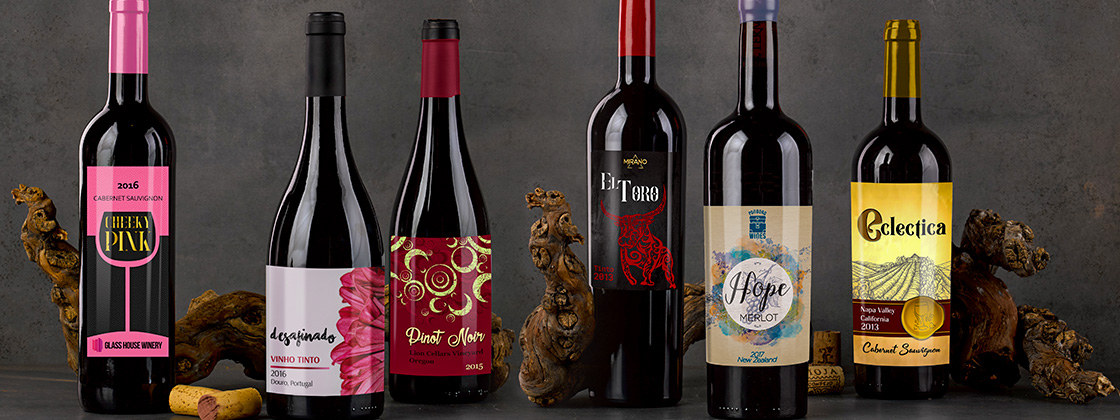Many archeological findings show that wine has been produced for thousands of years. From its origins in Asia and the Middle East, it rapidly became popular across the Medditerranean, Europe, North America and Southern hemisphere. In Greek mythology, wine was also known as “the nectar of the Gods” and it was reserved mostly for kings and priests who used it in various religious rituals.
Nowadays, although wine is available for the masses and the process of winemaking has been streamlined by the new age technology, there is still something mythical and divine about this beverage. For many vintners, growing wine grapes and producing wine is a way of life, a mix of science and religion, hard work and luck.
When it comes to the wine business in the USA, local winemakers surely owe many thanks for wine grapes to European colonists, but they too are blessed with a fertile soil and good climate for growing wine. Wine production in the USA is at the fourth place of total wine-producing regions of the world. Most of the wine is produced in California but also in the following states – Oregon, Washington, New York, and Virginia.
Every serious wine maker knows that in order to produce a great wine, one must think about every segment of that journey. Unless your vineyards and wine brand is already well-established and needs no special introduction, regardless of how good the actual wine is, it ultimately comes down to whether or not it would reach the consumers. This leads us to the packaging and wine labels in particular. Wine bottle labels are not only mandatory for selling wine in the U.S. marketplace and abroad but they are also the most powerful tool when it comes to marketing your wine.
As with any other beverage, there are certain regulations when it comes to labeling the wine in the United States. The wine label requirements are set by The Alcohol and Tobacco Tax and Trade Bureau, commonly known as TTB. Each wine bottle has at least two wine bottle labels – brand label placed on the front and other label placed on the back. The standard wine label shows the wine’s producer/ brand name, vintage, region of origin and grape variety.
Mandatory Wine Label Information
- Brand Name (The name under which a wine or line of wines is marketed. Must appear on the brand label.)
- Appellation of Origin (The geographic area in which the wine grapes were grown. May or may not be mandatory.)
- Grape Variety (Based on defined class/type designation; e.g “Red Wine” or “Cabernet”.)
- Percentage of Foreign Wine (If applicable; e.g. “30% of French wine”.)
- Alcohol Content (If the wine contains over 14 percent alcohol by volume, it must be presented as a number. For wines 7 to 14 percent alcohol type designations such as “table wine” or “light wine“ can be used instead.)
- Health Warning Statement (Required to appear on wine labels by the Alcoholic Beverage Labeling Act (ABLA) of 1988.)
- Name and Address (The name and address of the bottler of the wine, preceded by the phrase “Produced by” or “Bottled by”)
- Net Contents (The amount of wine that is in the bottle or container on which the label appears.)
- Sulfite Declaration (A statement that informs the consumer that the wine contains sulfites or sulfiting agents.)
- Color Ingredient Disclosures (If applicable, when wine contains certain additives, which are added to impart color to the product, like FD&C Yellow #5 or Carmine.)
Optional Wine Label Information
- American Viticultural Areas (AVAs) (A specific type of appellation of origin used on wine labels. Usually designates a specific geographic region or climatic features that distinguish it from the surrounding grape-growing regions.)
- Grape Variety Designations on American Wine Labels (A grape variety name approved by TTB. In this case an appellation of origin must also appear on the label.)
- Organic Claims (All organic wines must meet both Alcohol and Tobacco Tax and Trade Bureau (TTB) and USDA organic regulations.)
- Gluten Content Statements (Applies to “gluten-free” claims in wines made from fermented grapes that do not contain gluten.)
- Major Food Allergen Labeling (Wine producers may voluntarily declare the presence of food allergens, as well as ingredients that contain protein derived from these foods, in their wines, but they are not required to do so.)
- Statements Related to Nutrient Content, Serving Facts, Alcohol Facts, and Sugar Content (TTB regulations do not require nutrient content labeling for wine however allows it in two different formats – a “statement of average analysis” and a “Serving Facts statement.”)
Choosing Wine Labels Material and Printing Technique
As mentioned before, wine labels are an important step in winemaking and they help attract consumer’s attention. When choosing the wine label material, it is important to have these things in mind:
- What is your brand identity (Wine labels tell the story about your winery. Make sure to have this in mind when choosing the labels graphics, colors and typography.)
- Who is the wine indented for (Defining your wine’s consumer profile will also help in choosing the wine label design.)
At Beverage Labels we offer custom wine labels design and printing services to suit all of your wine labeling needs. We can help you create the wine labels that stand out and assist you in choosing the best label stock for your wine. We make self- adhesive wine labels that are 100% water resistant in many different shapes and colors. Furthermore, our innovative label printing techniques such as “no label” look, embossing and foil stamping will certainly make your wine bottle labels stand out.
Contact our team and let us help you create the winning custom wine labels for your brand.

